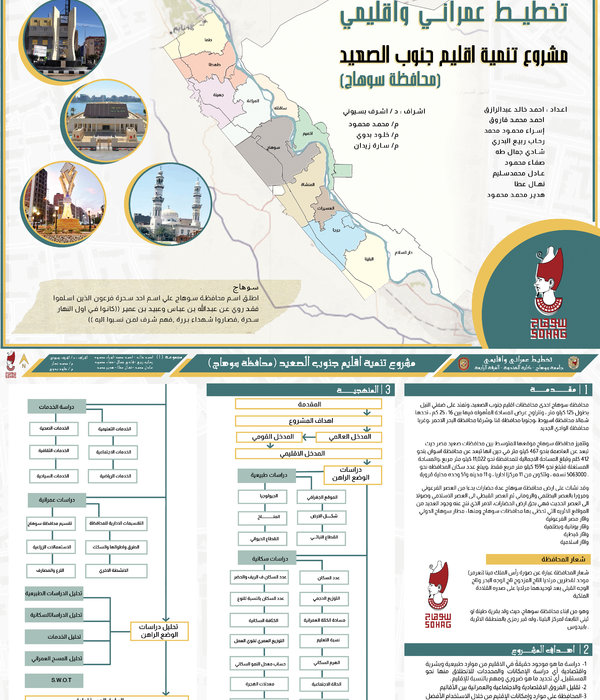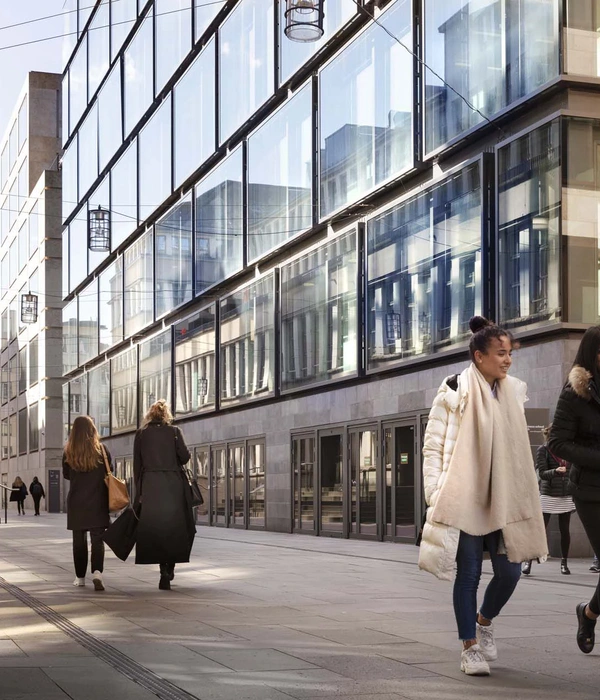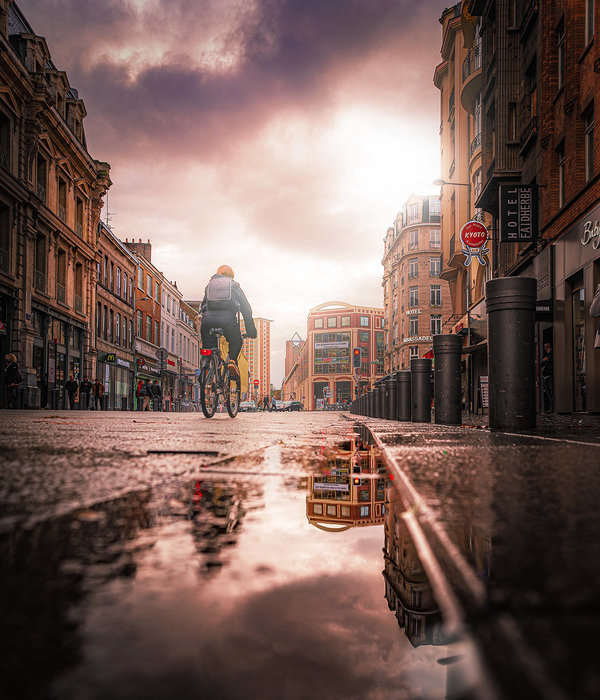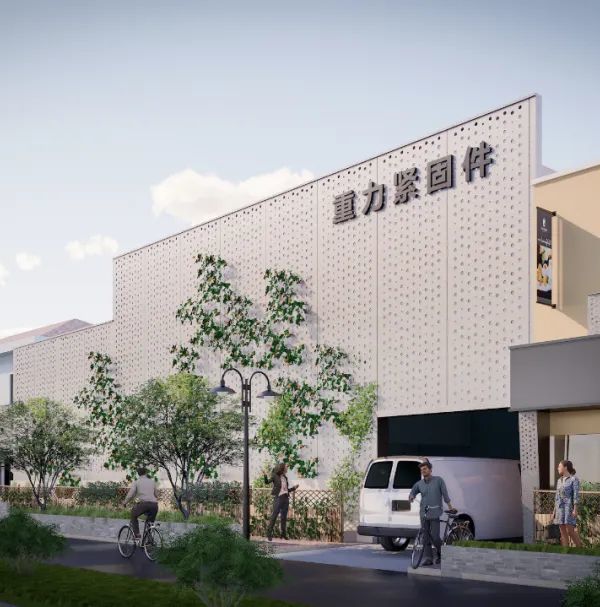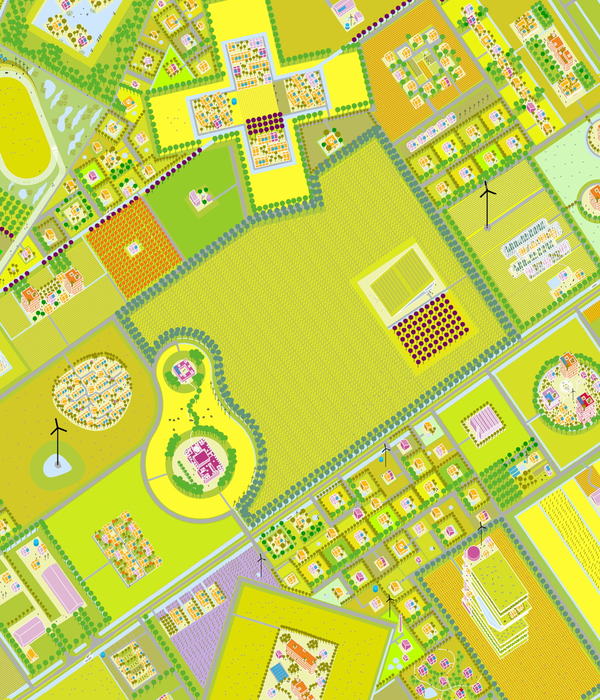宋庄,是中国乃至世界范围最大的艺术家聚集地,有来自 20 多个国家和地区的近万名艺术家在这里生活、创作。宋庄也是全世界拥有最多美术馆的地方,这个位于北京城市副中心的艺术创意小镇,在面积不到四平方公里的区域内,有数千个艺术家工作室,三十五家大中型美术馆。全球超过 80% 的国家级艺术馆、博物馆都收藏和展览着来自宋庄艺术家的作品,纽约的现代艺术博物馆(MoMA)就收藏有六位宋庄艺术家的作品。
▼项目鸟瞰,aerial view of the project ©白羽
Beijing’s rapid economic transition, unique political atmosphere and immense urban growth have shaped a trajectory of prominence of art villages in its metropolitan region from the 1900s. Its origins can be traced back to Yuanmingyuan, the grounds of the Old Summer Palace in the north-east of Beijing, where artist settled from all over China celebrating a creative community and period of intense artistic exploration. After this movement ended in 1994 many collective groups were constantly replicated around this urban fringe outside of the third ring, namely Factory 798, Caochandi and Songzhuang Art District.
The latter one has seen the largest development in recent years, with more than 5,000 artists living in its grounds and 35 large and medium-sized fine arts galleries, it is certainly one of the largest gathering of contemporary artists in China if not in the world. Centered in the village around Xiaopu, in Songzhuang Town of Tongzhou District, the major factors influencing this location were escaping from the fast-paced city and pressures of modern society while living side-by-side with the local population; this odd combination of art visitors and an aging population created an interesting scenario, where each group has their own needs for public spaces.
▼街景,street view©白羽
过去,村内艺术家工作室虽然多,但大多是关门搞创作,村庄整体环境也缺乏艺术气息,这让不少慕名而来的游客有些失望。近年来,通州作为“城市副中心”,堡村最早的定义是“画家村”,艺术家和村民和谐共处。后来艺术逐渐形成产业,艺术参与社会构建,人群也越来越复杂,还应考虑政府迁入带来的公务员及家属,相关智库企业,配套服务机构等人口结构更新作用,另外,在地居住的村民仍然占有相当大的比重,原住民与诸多新生群体一起创造了一种有趣而和谐的氛围,每个群体都有自己对公共空间的理解与需求。
区位分析,location analysis©Crossboundaries
宋庄镇政府对小堡南街公共空间的改造,不是孤立项目,项目背景是城市副中心建设,以副中心规划和小堡艺术区规划为蓝本,选取了这个重要节点,探索和尝试“城市更新”的手段落实规划,通过政府投资改善公共环境,引导环境升级、功能升级,实现街区品质提升。本项目是宋庄艺术商业示范街的入口,也是艺术创意小镇南区中轴线上的重要节点,与小堡文化广场、印象街项目构成整体景观系统。
宋庄镇政府希望提供一个具有多功能和包容性的公共设施,于是委托 Crossboundaries 将毗邻小堡文化广场停车场的街道景观改造成一个热闹,合符民生诉求的户外社区公园。
▼改造前的空间,space before renovation©左:白羽,右:杨超英
Understanding the challenge of offering versatile and inclusive communal facilities, a masterplan competition with international participation to reaffirm the importance of the new model of “Art City” was organized in 2018. In this framework, Crossboundaries was commissioned to regenerate a linear streetscape adjacent to a Parking lot close to the Xiaopu Cultural Plaza into a lively outdoor community park. This project is the first realized vibrant design of many to come that will follow the lead of the new communal spirit.
▼轴测图,axonometric©Crossboundaries
北方民居的传统灰砖贯穿了整个设计主体:公园的设计结合了现场环境,选择了适当的材料和种植,同时结合了精心设计的空间氛围。设计的主体构件是一个穿孔灰色砖墙,在指定区域有集中的座位,与穿孔耐候钢交替。后面则是一个绿色的区域,里面充满了松树和灌木丛,这些形成了一个进入停车场的自然缓冲区,可以通过各种隐藏的通道进入。
The park is created to suit the site environment with a proper choice of material and plantation, combined with carefully designed spatial configuration, sequence, and atmosphere. The main component of the structure is a perforated grey brick wall with integrated seating in designated areas, alternating with a double lower layer of perforated Corten steel. Behind it lies a green zone filled with Southern Chinese pine trees and low bushes, forming a natural buffer to the Parking area that can be accessed through various hidden pathways.
▼灰砖墙体贯穿整个设计,指定区域设有座位,gray brick walls define the space with seatings in certain areas©杨超英
街道一侧,用斜面耐候钢框起的长形花盆里种着波斯蚕丝树,它们形成了一个自然的隔离带,将繁忙的道路与公共区域隔开,同时使得新增的树木与现有的成熟的树木(芙蓉树等)相结合,嵌入到再次利用的小堡专属地砖中。公园铺设的地砖,在改造手法上保留了传统回忆,砖还是老的砖,上面的图案也由“小堡”二字设计而来,小堡专属地砖和灰砖墙元素也是在宋庄镇政府特别强调下保留。一起保留下来的还有原来种植于其中的芙蓉树、槐树,我们畅想四季更迭,风吹绿叶,芙蓉花开,这季节的味道,唤醒人们是童年回忆还是对于未来的期许,这就是我们留给小堡层层相迭的美好祝愿。
对于您的问题,我已经按照您的要求处理了文本,如果您还有其他需要帮助的地方,请随时告诉我。
On the street side, long planters framed with Corten steel edges contain Persian Silk trees, they form a natural separation from the busier road to the public area, which acknowledges the new addition to the site combined with the existing and preserved more mature trees (Chinese Locust trees) embedded within the re-used pavement stones.
▼耐候钢花盆隔离道路和公共区域,weathered steel planters separate the road and the public space©杨超英
金属网分隔公园和公共空间,metal mesh separating the park and the public space©杨超英
▼灰砖墙和金属网近景,closer view to the gray brick wall and the metal mesh©杨超英
在这片 L 型的场地上,路边人行道和公园之间以一系列户外“城市客厅”连接,蜿蜒前行,并沿着道路带动着周边的烟火气。“城市客厅”之间有着黄色漫步道联系,并使得不同的公共区域连成一个整体。这条小路一直贯穿着小公园,描绘出了一个更加自然的景观。法桐树和银杏树与前面有组织的“城市客厅”遥相呼应。因为有黄色的漫步道,这些“城市客厅”有着自己的层次:首先是如同前奏一般完全开放的欢迎客厅,然后是半围合的社交客厅,再到有着趣味游戏房的玩耍客厅,最后是一个多功能的体育休闲客厅,室外空间沿着客厅不断延申。
The L-shaped plot features a series of outdoor ‘rooms’ that provide unrestricted usage and trigger a variety of activities along a linear loop track, a connecting element meandering between the street side pavement and the park at a pocket of the site. The yellow track connects the rooms physically with each other, as well as forms a visual link between the different public areas. The path is leading all the way into and through the small park area, which depicts a more natural landscape with London plane and Ginkgo trees in contrast to the organized promenade in the front. Linked by the yellow track, these rooms offer different levels of enclosure and boundary along a sequence: from completely open, forming a plaza like a prelude, to a slightly more defined area with a semitransparent grey backing wall, to a fully enclosed one but open to the sky, and finally a less strictly defined one within the new park zone, where only the ground surface marking its expanse.
个客厅分析图,analysis of the four rooms©Crossboundaries
第一个客厅将最初的街角改造成一个小广场,开启了一个有着由角砖墙和超尺度镜面构建的半围合空间。每日清晨,这里是太极和扇子舞的团队聚集处,而在晚上,它则吸引着大量广场舞爱好者,偶尔会看到狗主人和他们心爱的宠物沿着环路漫步。
Transforming the initial street corner into a small plaza, the first room opens up a semicircular space defined by angular brick walls and large mirror surfaces. In the morning, it’s a place for tai chi and fan dance, while in the evening, it attracts groups of rhythmic dancers. The occasional dog owners with their beloved pets are seen along the bright yellow asphalt loop that connects the rooms.
镜面构件半围合的街角广场,plaza at the street corner semi-enclosed by mirrored components©杨超英
▼广场上的不同活动,different activities on the plaza©白羽
第二个客厅让自己与静谧对话:沿着长凳,吸引来了棋手和围观的人们;一群老妇人在树荫下聊天;爷爷奶奶们与孩子一同玩乐。在周末,年轻人在灰砖与耐候钢下自拍,在马路对面的咖啡馆小酌。
The second room is a place for tranquil interactions: long benches along the stepping profiles of interspersed brick walls invite Chinese chess players and their audience; groups of elderly ladies chat in the shadow of the trees; grandparents looking kindly after babies. On the weekends, younger people take selfies in front of the grey brick and Corten steel backdrop with drinks from the café across the road.
沿墙设置的休息和交流空间,rest and communication space along the walls©白羽
在公园延伸的拐角处,第三个客厅是专属于儿童的玩耍领地:一个亮黄色的房间;墙边有不同大小的躲猫猫和捉迷藏的入口;趣味的传声筒,可以听到叫喊声和唱歌声。爷爷奶奶,爸爸妈妈都可以从远处看到欢乐玩耍的孩子们。
▼转角处的儿童玩耍空间鸟瞰,aerial view of the space for children to play at the corner©白羽
儿童玩耍空间外观,external view of the space for children to play©白羽
▼灰色的砖墙内是明亮的黄色房间,room in bright yellow behind the gray brick walls©白羽
▼墙面上设有开口和游戏装置,openings and recreation installations on the wall©白羽
▼透过开口看房间,view into the room through the opening©杨超英
▼房间内部,inside the room©白羽
▼儿童在空间中玩耍,children playing in the space©白羽
在公园的域内,黄色的环线一直延伸到第四个客厅,一个露天健身房,绿色草地中间的运动空间。在运动器材和圆形座位之间,居民们各得其所。
Inside the rectangle of the park, the yellow loop track itself spans up the fourth room, increasing in size to an open-air gym, an exercise space in the middle of green meadows. Between the sports equipment and the circular seating, all community members find their own place.
▼公园鸟瞰,aerial view of the park©白羽
▼黄色环线连接露天健身房,yellow path connected to the outdoor gym©白羽
▼细部,details©白羽
这每 100 步一个“客厅”节点,创造让人停留的空间。从入口的欢迎客厅到娱乐客厅,再到运动客厅,每一个节点都有一个主题,人行步道将节点串联起来,形成愉快的步行体验。四季有景的林荫道、层次丰富的步行空间,让艺术家、居民和访客从城市的喧闹中抽离出来,在具有艺术氛围的空间中休闲、交流。
这座开放式艺术公园,将来还是艺术家们的作品展示平台。目前在欢迎客厅,就摆放着一座往届宋庄艺术节的获奖雕塑作品。未来还会有更多艺术作品摆进公园,让市民、游客在小堡村获得丰富多彩的、沉浸式的艺术体验。
▼丰富的活动,various activities©白羽
公园紧邻着的小堡南街,集聚了不少品质较高的餐厅,是通州区知名的餐饮街。公园的建成,在食客们品尝完美味佳肴,可以到公园中散散步,感受浓浓的艺术氛围。“过去,小堡南街的人行道很窄,两排树之间穿插停满了车,行人都在主路上走。”新建公园的过程中,重新调整了人行道上的绿化和树木间距,把车辆引导至停车场停放,此举有效改善了街道的空间秩序
宋庄城市客厅微景观公园已经受到了周围邻里的喜爱,它响应着不同人的需求,有着设计的包容性,尤其是各种色彩鲜艳的城市客厅空间,形成了一个融合着各个年龄段的人群的共同体,鼓励着大家互相交流,宋庄城市客厅微景观公园作为切入点,重新链接自然与社区、散落的原生居民与新移民,创造更新生活的同时满足居民私人空间与公共空间的平衡。
The streetscape meets with responding to different people’s needs: the inclusive nature of the design, its variety of inviting, bright spaces with colorful accents was adopted and occupied instantly and stands for a true example for integration and encouragement of interaction for all age groups. Furthermore, Songzhuang Micro Community Park helps growing the largest gathering place for artists in China in a symbiotic relationship together with the community.
▼人车分离的公共空间,vehicle-free public space©白羽
公园只是一个媒介,作为一种载体,承担并催化居民自发性的设计,这里只是 Crossboundaries 设计的一个微小呈现,我们希望“城市客厅”延伸渗透辐射至宋庄各个老旧街区,甚至是周边城市,从而带动整体城市街区的更新与发展。
The community park has proven a great success on bringing the district government agenda and investment plans together with a way of living that strengthen its own authentic heritage as a place for collective art and influence. It is an important milestone in the Songzhuang Xiaopu Art Zone Urban Design development, being the first executed project of the masterplan and a valuable example of quality public space for well-being and social encounter.
夜景,night view©白羽
▼总平面图,master plan©Crossboundaries
▼剖面图,section©Crossboundaries
{{item.text_origin}}

